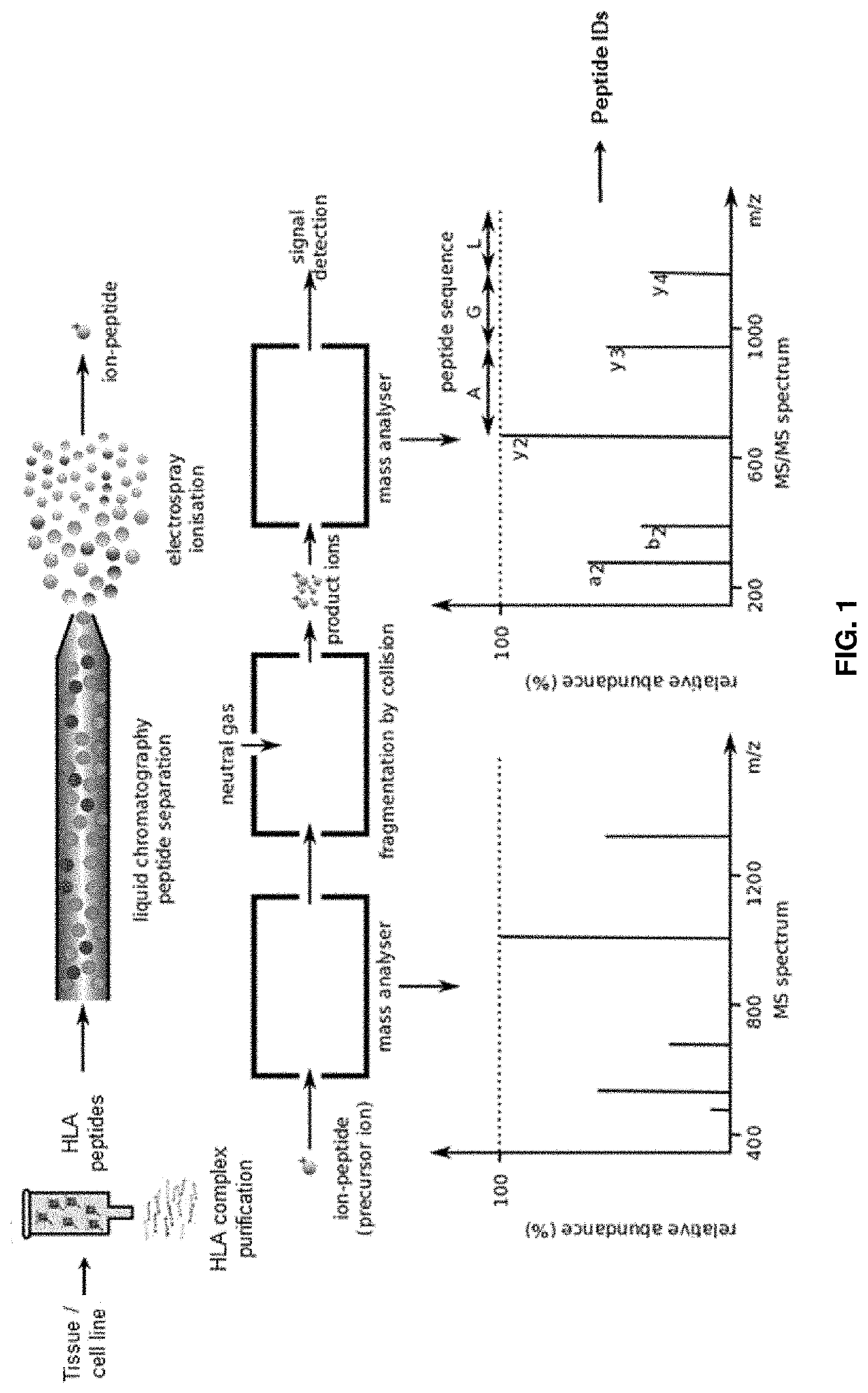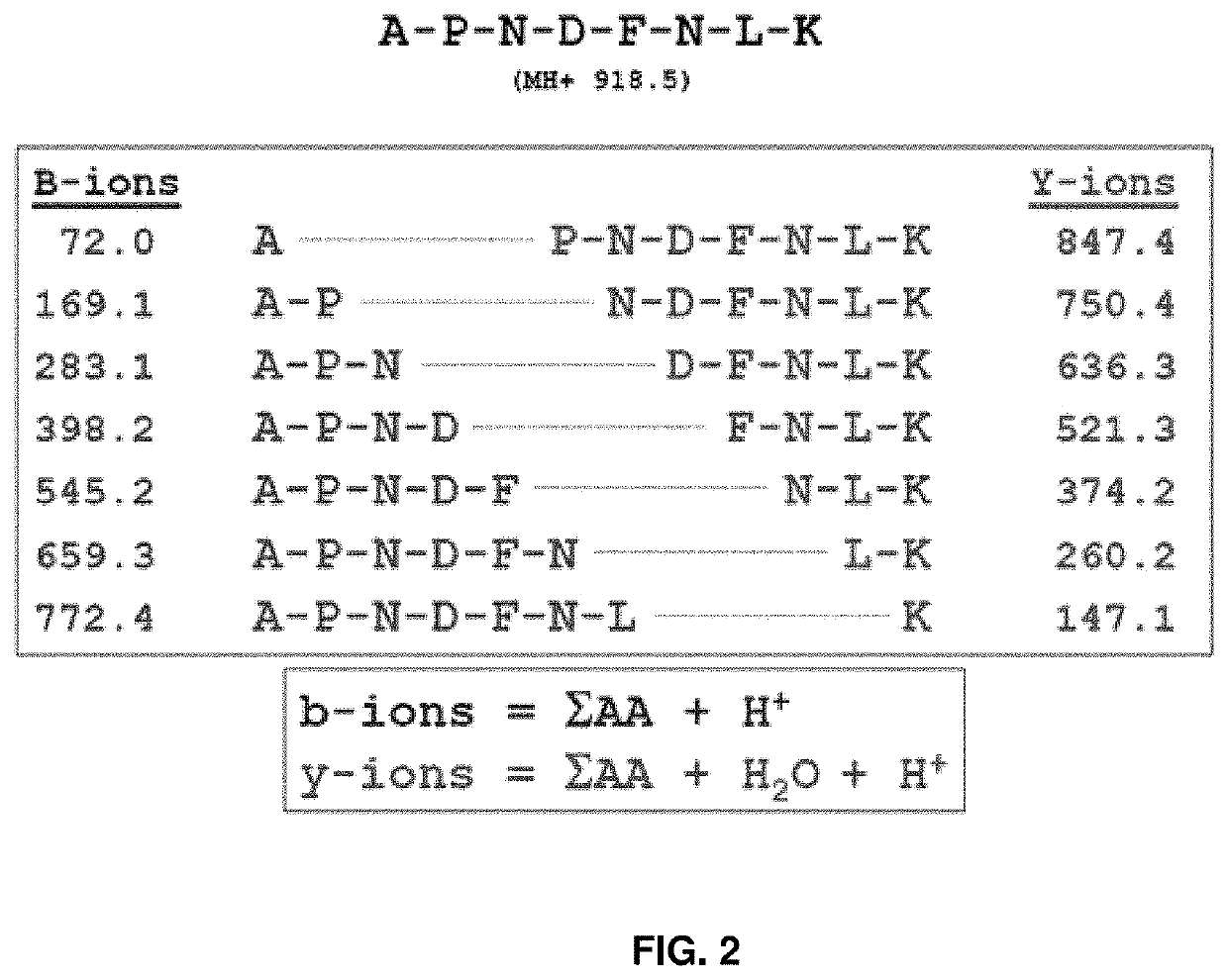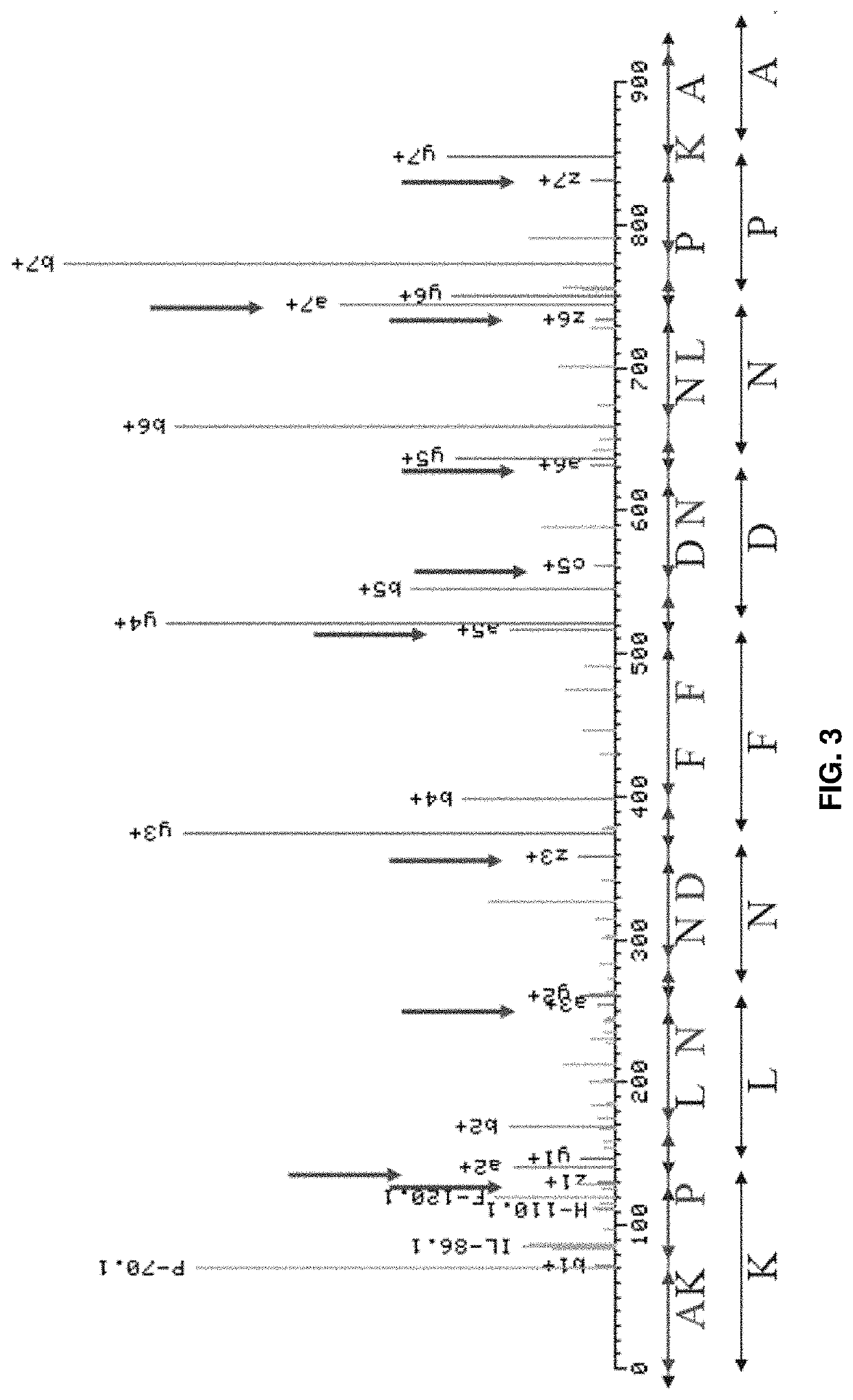Methods for peptide mass spectrometry fragmentation prediction
a mass spectrometry and fragmentation technology, applied in the field of improved identification of peptides, can solve the problems of severe limitation in identification and none of these prediction algorithms showed sufficient results for applications of hla immunopeptidome peptides, and achieve the effect of improving performance and performan
- Summary
- Abstract
- Description
- Claims
- Application Information
AI Technical Summary
Benefits of technology
Problems solved by technology
Method used
Image
Examples
example 1
HLA Peptidomic Data Generation
Tissue Samples
[0249]Patients' tumor and normal tissues were provided by several different hospitals depending on the tumor entity analyzed. Written informed consents of all patients had been given before surgery. Tissues were shock-frozen in liquid nitrogen immediately after surgery and stored until isolation of HLA peptides at −80° C.
Isolation of HLA Peptides from Tissue Samples
[0250]HLA peptide pools from shock-frozen tissue samples were obtained by immune precipitation from solid tissues according to a slightly modified protocol using the HLA-A, -B, -C-specific antibody W6 / 32, the HLA-A*02-specific antibody BB7.2, CNBr-activated sepharose, acid treatment, and ultrafiltration. For different HLA-alleles other specific antibodies available in the art can be used as there are for example GAP-A3 for A*03, B1.23.2 for B-alleles.
Mass Spectrometry
[0251]Mass spectrometry was performed according to the methods described in, for example, Zhang et al. (2018) Nat...
example 2
Fragmentation Models
[0253]In an aspect, the peptide encoder includes three layers: (1) a bi-directional recurrent neural network (BDN) with gated recurrent memory units (GRU), (2) a recurrent GRU layer, and (3) an attention layer all with dropout. The recurrent layers use 512 memory cells each. The latent space is 512-dimensional. Precursor charge and NCE encoder is a single dense layer with the same output size as the peptide encoder. The latent peptide vector is decorated with the precursor charge and normalized collision energy (NCE) vector by element-wise multiplication. A one-layer length 29 BDN with GRUs, dropout and attention acts as decoder for fragment intensity. Implementation was done in Python with keras 2.1.1 and tensorflow 1.4.0 compiled to use GPUs.
Training Data and Testing Data
[0254]In this example, inputs to the fragmentation models are, peptide sequences, precursor charge, and NCE. Peptide sequences are represented as discrete integer vectors of l...
example 3
IM Model Performance
[0266]The IM model described herein was tested using peptides that are difficult to distinguish from one another and have a high false positive rate when tested using other models.
[0267]The IM Model used was constructed using Filtering criteria: PSMs with run level FDR0.1; Collision-induced dissociation (CID) fragmentation 35: Training data: 180,000 unique peptides; and Higher-energy collisional dissociation (HCD) fragmentation 25-27: Training data: 166,000 unique peptides. The IM model was compared the Prosit pretrained model (HCD 25) and Posit pretrain model (HCD 27). One limitation of Prosit is that it only provides prediction model for HCD spectra, but the system and methods described herein have both CID and HCD models. Therefore, the comparison was done only for HCD model.
[0268]The Dot Product score we derived from Immatics-pDeep HCD model (an embodiment of the system and method described herein) was higher than Prosit's models, meaning that the spectra pre...
PUM
| Property | Measurement | Unit |
|---|---|---|
| frequency | aaaaa | aaaaa |
| mass spectrometry | aaaaa | aaaaa |
| peptide spectrum match | aaaaa | aaaaa |
Abstract
Description
Claims
Application Information
 Login to View More
Login to View More - R&D
- Intellectual Property
- Life Sciences
- Materials
- Tech Scout
- Unparalleled Data Quality
- Higher Quality Content
- 60% Fewer Hallucinations
Browse by: Latest US Patents, China's latest patents, Technical Efficacy Thesaurus, Application Domain, Technology Topic, Popular Technical Reports.
© 2025 PatSnap. All rights reserved.Legal|Privacy policy|Modern Slavery Act Transparency Statement|Sitemap|About US| Contact US: help@patsnap.com



